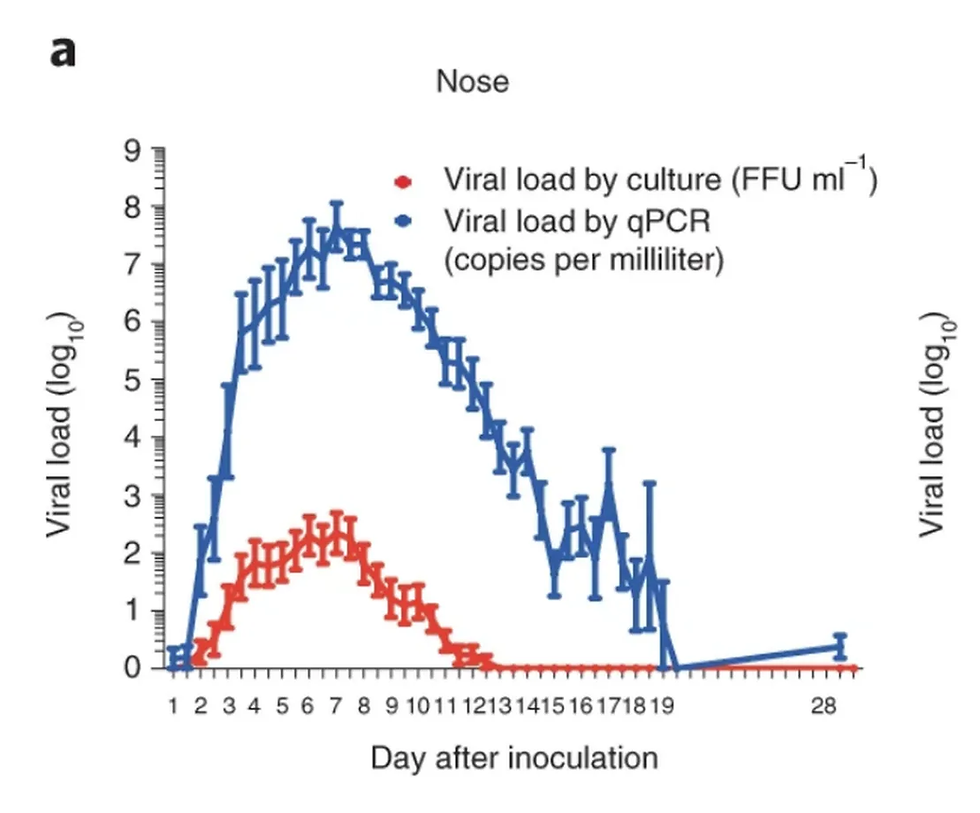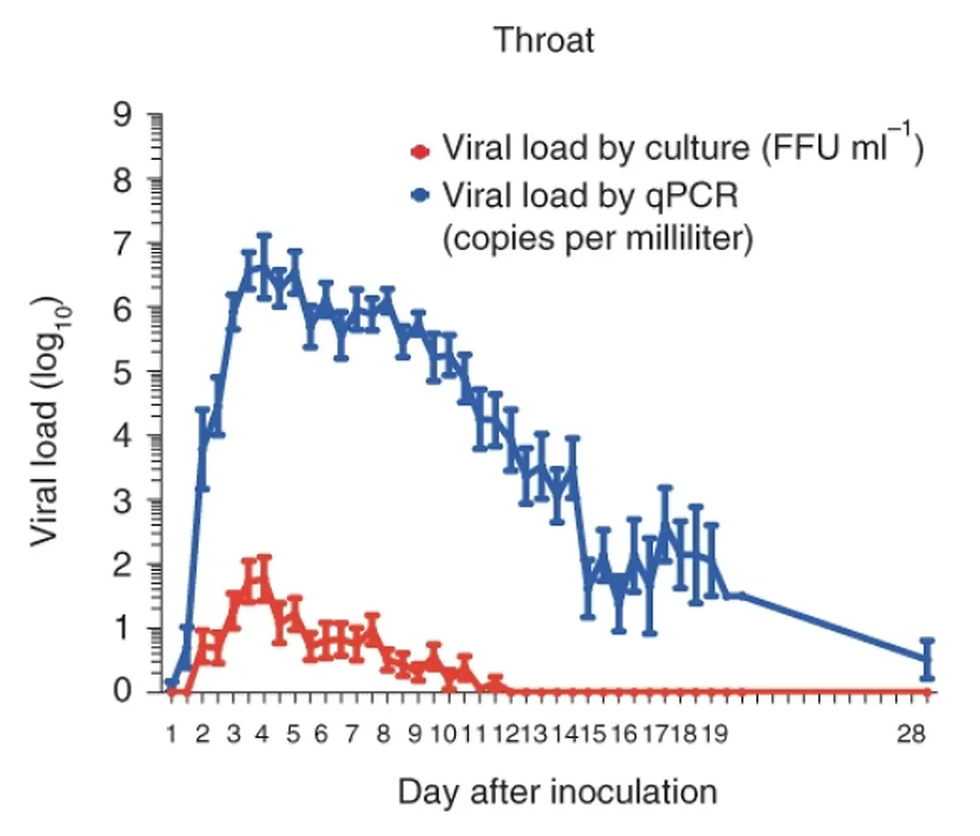The truth about "asymptomatic" spread, From the heart of the Covid establishment
- truth81
- Aug 23, 2022
- 5 min read
May 22, 2022
by Hector Drummond | TCW

AN important study into Covid-19 has got very little traction, despite coming from the Covid industry’s favorite university, Imperial College London.
This is likely to be because the study totally destroys the industry’s assumptions about asymptomatic spread.
The other institutions involved in this study are the Vaccine Taskforce and Department of Health and Social Care (DHSC), hVIVO (part of Open Orphan plc), and the Royal Free London NHS Foundation Trust. In other words, this study was conducted by the heart of the Covid establishment.
What did they find? Well, forget all you were told about it taking five to six days to develop Covid symptoms, which was always an unwarranted claim whose main purpose was to imprison whole populations. Even if that had been true, it wouldn’t have provided the justification for the Great Jailing that governments across the world sprang on their people. But it’s not true anyway: ‘Researchers found that symptoms start to develop very fast, on average about two days after contact with the virus.’
In fact, it was less than two days – it was 42 hours.
What’s more (and the Imperial press release makes little of this) the amount of detectable virus in the throat and nose in that 42 hours is small. It’s only after symptoms start that the virus levels really crank up. For the first day there’s pretty much nothing; on the second day levels start to rise, but to nowhere near the levels they reach on subsequent days, after symptoms have appeared.
We can see this by looking at some graphs from the paper (from Fig. 2 – the first graph shows levels in the nose by day, the second shows the levels in the throat).


As the study says, ‘viral shedding begins within 2 days of exposure’.
Bear in mind also that coughing and sneezing send out vastly far more virus particles than breathing. (For the in-depth details, see chapter 3 of my book The Face Mask Cult.) But if you do not have symptoms, you will not be sneezing or coughing. So even if in the last few hours of your pre-symptomatic period your viral load starts to build up in your nose and throat, you aren’t going to be sending that out into the world in any great amount, because you are pre-symptomatic, and so by definition you aren’t coughing and sneezing.
Remember how you were told at the start of spring 2020 that Covid-19 was a unique virus, different from every virus in history, in that it spread wildly from asymptomatic people, which apparently no virus had ever done before, at least not in anything like the way Covid did? Even normally sober writers such as Matt Ridley spread this melodramatic idea, despite the fact that at the time it had little more credibility than your average urban myth. Asymptomatic spread was the basis for locking everyone up – everyone, not just those with symptoms – but it has turned out to be a chimera.
And of course the enforced quarantine periods not only had to be long, they had to be repeated, over and over, because you could never tell if someone was infected and their breath was spreading Covid across whole suburbs and workplaces and factories, even if that person had just come out of a long enforced quarantine a few days ago after a close contact tested positive, and even if that person felt completely fine. They might still have caught Covid for real since they left quarantine, and even now are killing grandmothers by the dozen as they eat their lunch with their friends. Better lock them up again. And everyone else.
Such was the damage inflicted upon society by the asymptomatic hysteria. In theory it could have gone on for ever; the only things that stopped it doing so were, firstly, the public gradually starting to realise that their lives were being ruined for an overhyped threat, and, secondly, the embarrassing lack of solid evidence to show that asymptomatic spread played much of a role in Covid dissemination (or that Covid was unique in regard to the extent of asymptomatic spread).
So there isn’t any point at all in worrying about catching Covid from someone with no symptoms.
There also isn’t any point in symptomless people testing themselves all the time. Or ever. Getting Covid from someone who isn’t showing any signs of it will not happen very often, so the social damage caused by requiring people who aren’t ill to take a test vastly outweighs the benefits of testing them (especially when we consider that the benefits of testing are basically nil anyway – billions of tests have done nothing to prevent Covid remorselessly spreading across the world).
In other words, these results tell us (although this was already clear) to stop testing, stop quarantining and stop worrying about getting Covid from people who aren’t sick. And that means shutting down the whole Covid-industrial complex. The world was trashed for nothing.
I should note that the study does say ‘our data clearly show that SARS-CoV-2 viral shedding occurs at high levels irrespective of symptom severity, thus explaining the high transmissibility of this infection and emphasising that symptom severity cannot be considered a surrogate for transmission risk in this disease’.
This may seem to go against what I have said so far, but it doesn’t, as it applies to the period after symptoms have started, not the period before. It is true that once you have symptoms, there is little correlation between the severity of those symptoms and the amount of viral shedding, as Figs. 4e and 4f in the paper show. (‘Viral shedding’, I should note, refers to the amount of virus found in the nose and throat – it doesn’t refer to the amount of virus being ‘sent out’ by the infected person into the surrounding world.) So someone who has very severe symptoms may not have any more virions in their nose and throat than someone who has mild symptoms.
In the two-day pre-symptomatic period, however, it remains the case that there are only low levels of viral load in the nose and throat, as we saw from the graphs above.
Another significant finding from the study was that it took very little virus to infect someone:
‘Participants were exposed to the lowest possible dose of virus found to cause infection, roughly equivalent to the amount found in a single droplet of nasal fluid when participants were at their most infectious.’
This also means that facemask use is particularly pointless. At best masks can reduce the amount of virions breathed in and out by about 10-15 per cent but if it takes very little to infect a person this will achieve nothing. If someone is breathing out 15,000 virions every ten minutes, reducing that to between 13,500 and 14,000 won’t help.
Of course, the study and the Imperial press release didn’t tell you this. All it said about facemasks was that the study emphasised the importance of wearing them over the nose as well as the mouth, because the nose contained higher peak levels of the virus than in the mouth.
Also, as expected, none of the healthy young people in the study developed anything other than mild-to-moderate cold-like symptoms. None of them ended up in a bad way. As we already knew two years ago, this is a disease which does not threaten the vast majority of young people.
For two years now sceptics like me have been telling people to throw away their tests, and to stop isolating healthy people, and to stop worrying whether the people around you in the restaurant are going to kill you, as the scientific evidence doesn’t support this. If you didn’t believe us then, perhaps you will now.
SOURCE: TCW









Comments